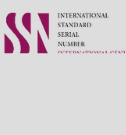In-silico identification of potential phytochemical against Glycoprotein-Gc of Hantavirus
Keywords:
In-silico, hantavirus , spike glycoprotein, drug discoveryAbstract
Background: Hantaviruses are novel zoonotic pathogens, which belong to the family Hantaviridae. The pathogens are tri-segmented, monopartite, enveloped, single-stranded (negative-sense) RNA viruses distributed worldwide, especially in Asia, Europe, and North and South America. It is asymptomatic and persistent in rodent host reservoirs. In rodents, the viruses do not cause infection but are transferred to humans by contaminated aerosolization of rodent excrement. Hantaan Orthohantavirus (HTNV) results in hemorrhagic fever with renal syndrome (HFRS) with an incredibly high mortality ratio. No drug is approved against it; therefore, this virus is classified as a Biosafety level 4 agent.
Objective: In this study, the surface spike (glycoprotein: Gc) of the virus genome is selected as an antiviral target, encoded by the M segments.
Methods: According to ADMET criteria, BBB- ligands were filtered out of 17967 compounds (phytochemicals). After careful analysis, the potential inhibitor against surface spike glycoprotein (Gc) was identified by using in-silico methodologies such as molecular docking, molecular dynamic (MD) simulations, and density functional theory (DFT).
Results: Verification of the selected structure of targeted protein molecule Gc was done using online servers. The protein–ligand complex shows deviation throughout the trajectory and the highest deviation which can be observed is more than 6Ǻ. The root mean square deviation (RMSD) for ligand is stable and it does not deviate more than 2Ǻ throughout 200ns. During the trajectory, hydrogen bonds were formed. It has been observed from the graph that the hydrogen bonds are forming but not uniform at some points.
Conclusion: In our current analysis, (2S,3R,4S,5S,6R)-2-[[(6aR,11aR)-9-methoxy-6a,11a-dihydro-6H-[1] benzofuro[3,2-c]chromen-3-yl]oxy]-6-(hydroxymethyl)oxane-3,4,5-triol was identified as an effective compound for the therapeutic measures against Hantavirus. The outcomes of this study will contribute to a better understanding of Hantavirus-related diseases.
Downloads
Downloads
Published
Issue
Section
Categories
License
Copyright (c) 2024 Chronicles of Biomedical Sciences

This work is licensed under a Creative Commons Attribution-NonCommercial 4.0 International License.




